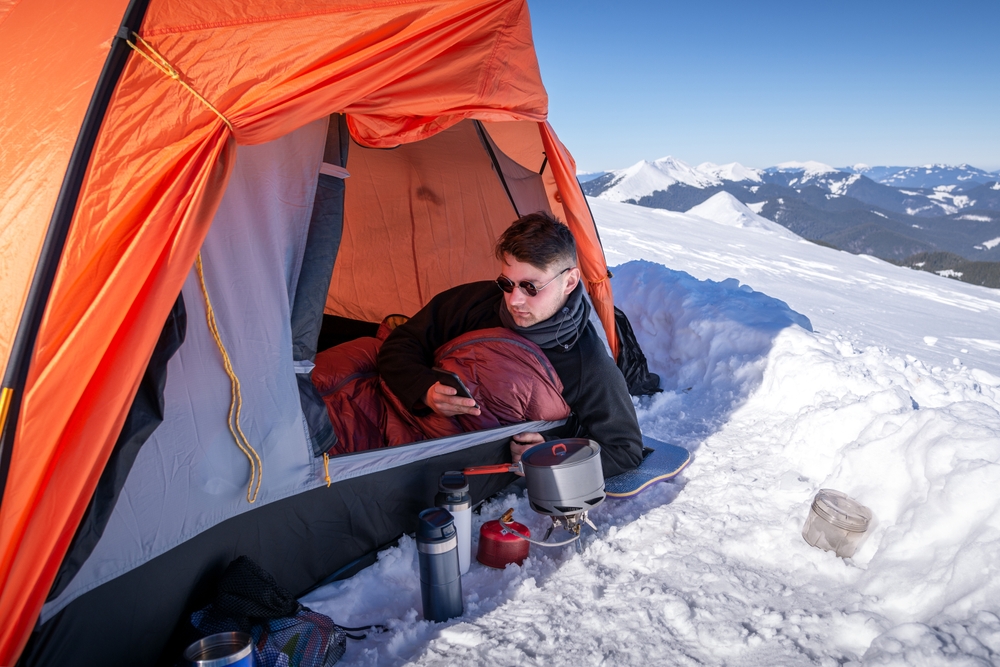Every generation has faced the same cold season challenge: stay warm, stay fed, and stay alive until spring. Long before central heating or grocery stores, Native tribes, frontier settlers, and Amish farmers each built systems for surviving deep winter.
They worked with nature, not against it. Their methods were low-tech, reliable, and efficient, the same qualities modern preppers depend on. By studying how these cultures used insulation, fire, food preservation, and community, we can learn what still works best today.

Shelter and Heat
Tribes built homes suited to their regions. Plains families lived in buffalo-hide tipis that stayed warm with thick hides and a central fire pit that vented smoke. Woodland tribes used bark-covered longhouses or wigwams that trapped heat and blocked wind. Heated stones near the floor provided gentle warmth through the night. Camps were set up in sheltered valleys or tree lines for wind protection.
Clothing and Protection
Clothing came from nature. Layers of deerskin, fur, and hide held warmth and repelled wind when treated with oil or animal fat. Some people rubbed grease on exposed skin to prevent frostbite. Fur-lined boots, mittens, and hoods finished the system.
Food and Planning
Preparation started months ahead. Hunters dried and smoked meat, while foragers stored corn, beans, squash, and wild rice in lined pits or baskets. Pemmican, made from dried meat mixed with fat and berries, supplied dense calories. Elders tracked seasonal signs to plan hunts and harvests.
>>For modern preppers, having ready-to-eat protein can make the same difference. Shelf-stable canned beef gives lasting energy without refrigeration or complicated prep.<<
Modern Lesson: Natural insulation still works. Layered clothing, wool blankets, and heated stones follow the same logic. Drying, smoking, and fermenting food remain reliable ways to store nutrition without power.

Cabins and Heat
Settlers built log cabins sealed with mud or moss to block drafts. Fireplaces and wood stoves burned constantly, fed by cords of firewood stacked all summer.
Clothing
Wool and flannel kept them alive. Pioneers wore long underwear, heavy shirts, and thick coats. Buckskin, mittens, and wool blankets added protection from snow and wind.
Food Storage
Root cellars carved into hillsides kept food cool but above freezing. Potatoes, carrots, onions, and turnips stayed fresh for months. Fruits and vegetables were dried near the hearth or preserved in vinegar brine. Once canning jars arrived, families filled them with pickles, jams, and meats for winter. In deep cold, meat could be salted, smoked, or simply left outdoors to freeze.
Modern Lesson: A basement or buried freezer can serve as a root cellar. Canning, pickling, and dehydrating remain essential skills. Stock firewood early and keep a working stove for both cooking and heat.

Heat and Light
The Amish still live close to the land. Wood cookstoves heat the kitchen, warm water, and bake bread all at once. Kerosene lamps and candles light long evenings. Barns full of livestock and hay naturally buffer cold winds.
Clothing and Bedding
Amish clothing is handmade and layered. Heavy wool coats, hats, and capes trap warmth. Quilts with dense stitching and thick batting keep families comfortable through the coldest nights.
Food and Storage
Every Amish home has shelves lined with mason jars. Fruits, vegetables, jams, pickles, and meats fill pantries each fall. Canning and fermenting are community skills that guarantee full tables when fields are frozen.
Modern Lesson: A wood stove can heat and cook efficiently. Heavy quilts and layered bedding reduce fuel use. Canning and fermenting garden produce give lasting food security when the grid goes down.

Across all three cultures, several habits repeat:
- Layered insulation: Wool, fur, or heavy fabric trap air and hold heat. Today, thermal layers and wool blankets serve the same role.
- Wood heat and cooking: Each culture used wood fires for warmth and food. Modern preppers should maintain a safe wood stove, seasoned firewood, and a backup way to cook.
- Food preservation: Drying, smoking, pickling, and canning kept families fed through winter. These techniques still work anywhere.
- Smart shelter: All three groups used thick walls, natural windbreaks, and sunlight to their advantage. Seal cracks, hang curtains, and store supplies where temperatures stay stable.
- Community: Native tribes, wagon families, and Amish neighbors shared labor and protection. A local network can do the same when systems fail.
Modern materials make old wisdom easier. A good wood stove beats an open fire for efficiency. Pressure canners replace smokehouses. Wool and synthetic layers outperform raw hides. Yet the same mindset matters most: prepare early, conserve energy, work together, and respect the land.
To prepare for winter now:
- Build a dependable heat source.
- Layer clothing and bedding.
- Preserve food before frost.
- Insulate your shelter with natural materials.
- Stay connected with your community.

The people before us faced brutal winters without electricity or supermarkets. They survived because they prepared early and worked together. The same approach still wins today.
Stock your pantry, cut your firewood, and seal your home before the first freeze. Proven skills outlast new technology, and old wisdom still keeps the cold at bay.






Read the full article here




